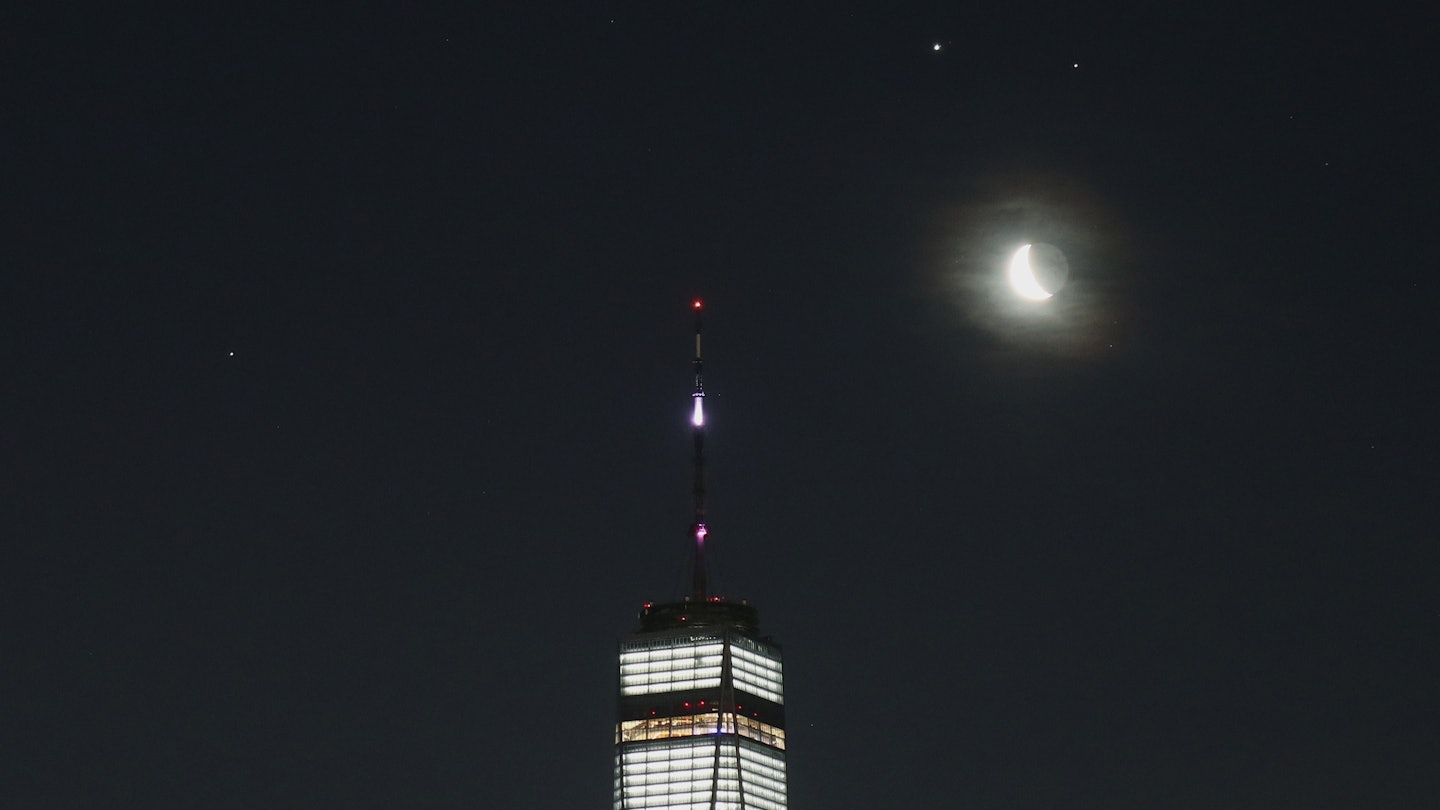Rare 'Christmas Star' event to occur on the winter solstice this year
Dec 14, 2020 • 1 min read

Saturn, Jupiter and Mars along with a crescent moon rise in the pre-dawn sky above the One World Trade Center © Gary Hershorn/Getty Images
Skywatchers are in for a festive treat as the planets Jupiter and Saturn are closing in on their great conjunction on December 21, the day of the winter solstice. At their nearest, they’ll be only 0.1 degrees apart from us here on Earth, the closest they've been since 1623 and the closest observable since 1226.
According to Earthsky, the term "great conjunction" describes the meetings of the two biggest worlds in our solar system. Jupiter-Saturn conjunctions happen every 20 years, with the last one taking place in the year 2000. On that occasion, the phenomenon was difficult to observe as Jupiter and Saturn were near the sun. This forthcoming great conjunction is expected to be more observable as the planets are easily visible and very noticeable at present.
Some say the planets will look like an “elongated star” when they come together on December 21, a phenomenon that is often also referred to as the "Christmas tar." Mind you, despite being a tenth of a degree apart visually, they will actually be 400 million miles apart in reality. This impending extra-close conjunction won’t be matched again until the Jupiter-Saturn conjunction of March 15, 2080, and well, many of us won't still be around for that.
The spectacle should be visible to the naked eye, although a better view will be achieved through a telescope or binoculars. The planets are expected to be low in the sky and can be seen just after sunset on December 21. Further information is available from Earthsky here.
You might also like:
This Italian town is the perfect spot for stargazing
The Pacific island of Niue is the first whole country to become a dark sky nation
The best US national parks for stargazing, according to star map makers




